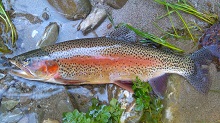
Ontario Gov’t Protecting Bee Populations
Two years ago, we wrote an article about the decimation of the bee population, due to certain chemicals used as pesticides (neonic-treated seeds). While this pesticide renders the plants toxic to pests, these same chemicals are destroying bee populations. Honeybees at risk, Are we Next? Recently the Ontario government has moved to reduce the use of these agricultural chemicals. We understand that it is opposed by some in the chemical industry, but the loss of these pollinators would have a extremely severe consequence for the whole agricultural industry, if allowed to continue.
What the Ontario government plans to do, is to restrict the use of corn and soybean treated seeds by 80%. While it is too late to affect this year’s crop, since the seeds have been already purchased, they plan to have this in effect by July 1, 2015, Also Ontario farmers must complete training on how to control and eliminate certain pests like wire worms and grubs.
This will make Ontario, the first province or state to enact controls on these pesticides. At the present time, there is a two year moratorium on these pesticides in Europe. Jeff Leal, Ontario’s Minister of Agriculture stated “We know, and farmers recognize, there are risks associated with the use of neonicotinoid pesticides. We also know that, in certain circumstances, they are an important tool for farmers and help to increase production and maintain a reliable food supply for our province.”
“A reduction at this level puts our farmers at a competitive disadvantage with the rest of the country and the rest of the North America,” said Barry Senft, chief executive officer of the group that represents 28,000 farmers. “It will mean smaller margins for grain farmers and could signal the transition away from family farms to large multinational farming operations that can sustain lower margins.”
It is interesting to note that half of the hives did not survive the past winter. While these pesticides are not the only cause of the hives deaths (mites and long winters), the normal level is 15%. Health Canada is re-considering its approval of products containing the three most widely used neonics in partnership with the U.S. regulator.
Glen Murray stated: “There’s a growing preponderance of research showing [neonics] are quite dangerous and they stay in the environment for a long time. We’re not doing this on an emotional basis. We’re doing this on an evidence basis.”
Now the question is: What is your province or state doing?
By
Wayne Sheridan for Canadian Angling.com



